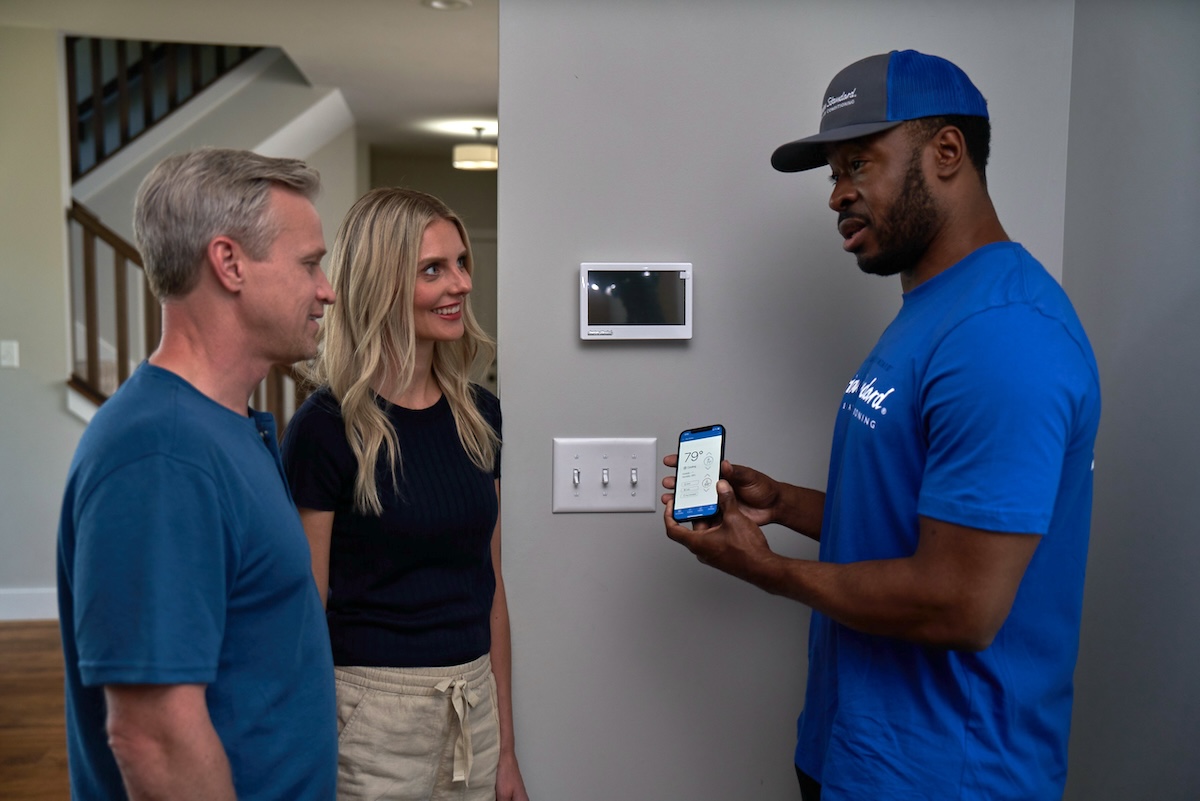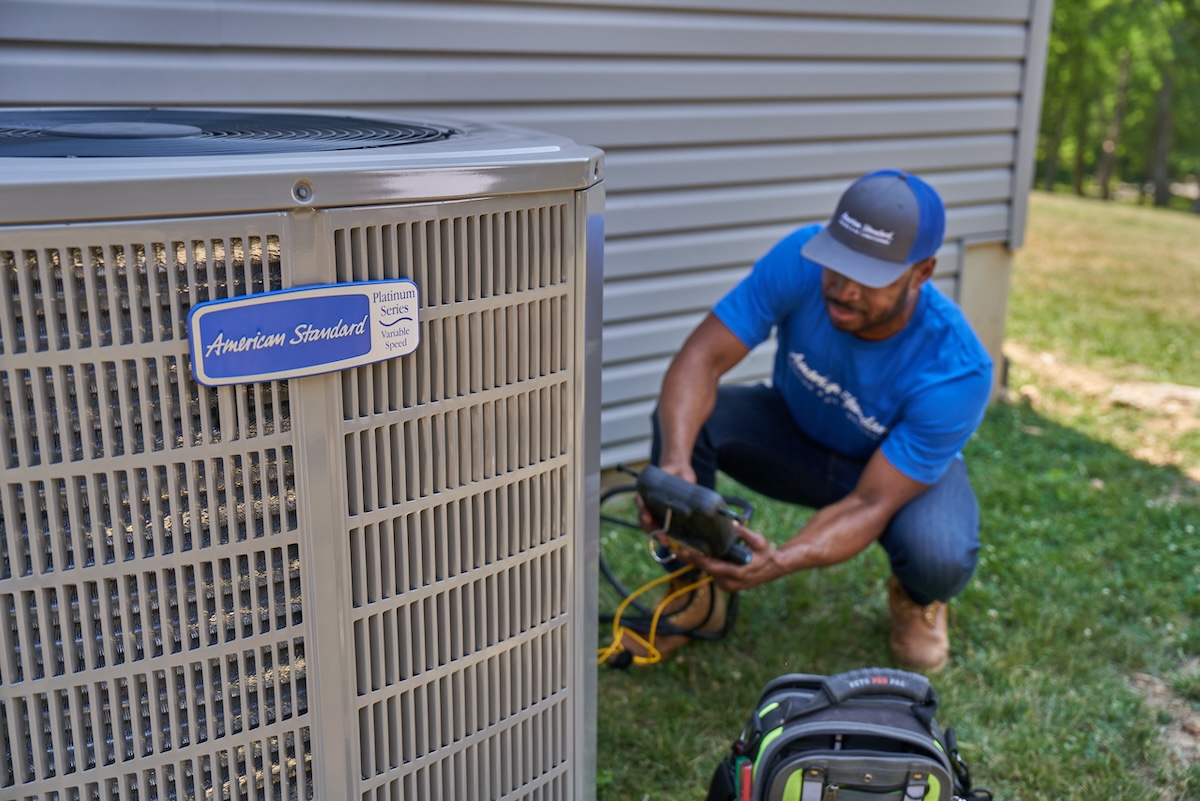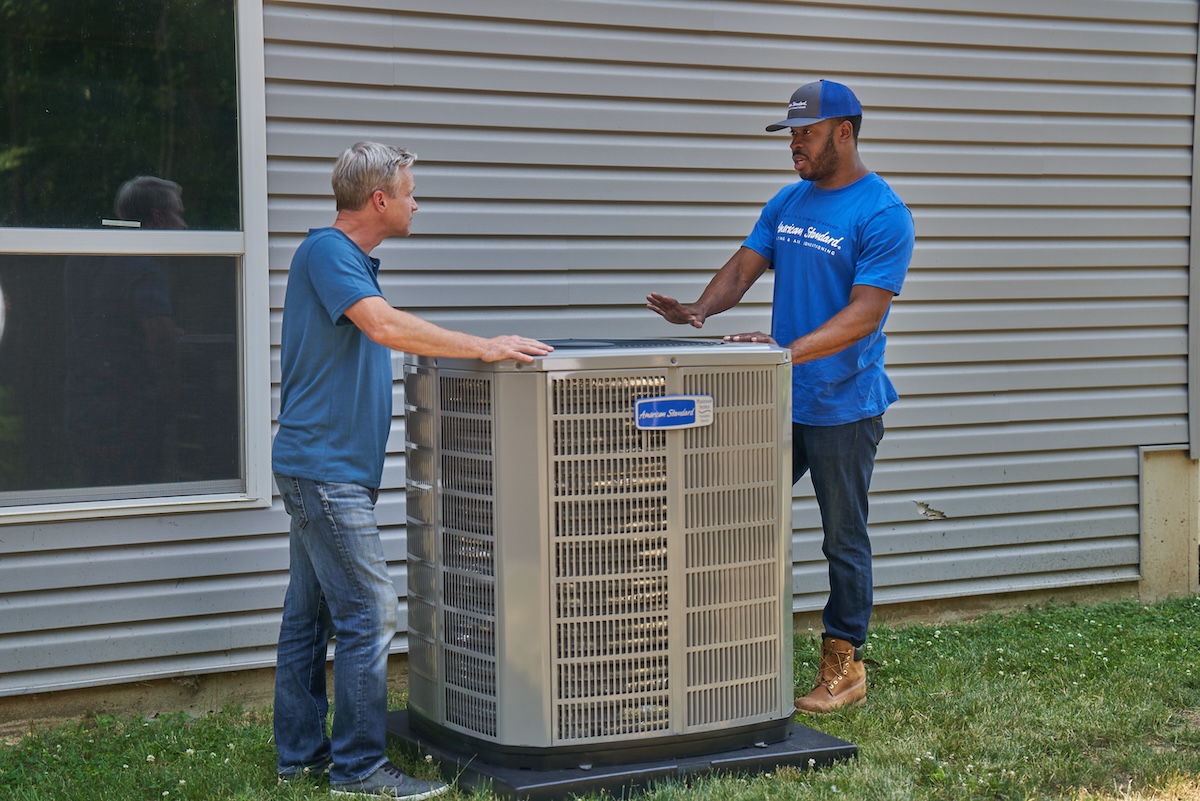

Partner Story
American Standard’s AccuComfort Platinum 20 Heat Pump can save you thousands in tax credits and rebates in addition to lowering your home’s energy bill.
HURRY 🚨 OUR FAVORITE PRIME DAY DEALS END SOON


Partner Story
American Standard’s AccuComfort Platinum 20 Heat Pump can save you thousands in tax credits and rebates in addition to lowering your home’s energy bill.
We may earn revenue from the products available on this page and participate in affiliate programs. Learn More ›
The federal government has a goal of reducing electric prices by 9 percent by 2030, and in order to do so they need your help; and they are willing to fork over thousands in rebates and tax credits in return.
Thanks to the 2022 Inflation Reduction Act and the Home Energy Rebates Program, you stand to save thousands in tax credits and rebates by upgrading your old HVAC system to a new one, such as American Standard’s AccuComfort Platinum 20 Variable Speed Heat Pump.
That’s in addition to the hundreds in savings you could reap each year on your energy bill.
“By investing in the systems that use energy (HVAC is roughly half of home energy use) and improving them, it’s possible to reduce costs, delay or negate the need for infrastructure upgrades, and deliver the benefits of improved HVAC systems to consumers,” says Josef Hejda, electrification commercialization leader at Trane Technologies.
The government is offering up some pretty big incentives in the form of tax credits and rebates to those willing to take the plunge and switch to a home heat pump. As part of the Inflation Reduction Act, the federal government will cover up to 30 percent of the cost of a high-efficiency heat pump, including the labor to install it, up to a maximum of $2,000.
Rebates offer even greater opportunities for savings. Federal and state governments are offering low- to moderate-income households savings that range from $4,000 to $8,000 through the High-Efficiency Electric Home Rebate Act (HEEHRA).
Local utility companies and some HVAC manufacturers, including American Standard, are also offering hundreds of dollars in rebates for the purchase of high-efficiency heat pumps.

Heat pumps differ from a furnace and central AC unit in how they create heat and cool air. Heat pumps work by extracting heat from the outdoor air (in the case of an air-source heat pump). The heat pump then transfers the heat indoors where it’s distributed throughout the home. Furnaces, in comparison, often burn natural gas to create heat that’s circulated throughout a home.
A heat pump working in cooling mode functions similarly to a central air conditioning unit. Both units use a refrigerant to cool coils. When warm air inside the home is circulated through the heat pump or AC unit, the refrigerant in the coils absorbs the heat. The remaining cool air is then recirculated back into the house.
“Consider a heat pump to act like a heat transporter,” Hejda says, “constantly moving warm air from one place to another, where it’s needed or not needed, depending on seasonality.”
Saving energy, cutting your power bill, and reducing your home’s carbon footprint are all good reasons to make the switch to a heat pump.
You stand to significantly reduce your home energy use by trading out your aging HVAC system for a heat pump. For example, American Standard’s AccuComfort Platinum 20 Variable Speed Heat Pump can cut the amount of electricity you use for heating by up to 50 percent.
Of course, saving energy translates to a lower utility bill. Hejda says, “While there may be an up-front investment to install a heat pump, it’s a more energy-efficient system that can reduce utility costs. Compared to a traditional furnace and air conditioner setup, a heat pump can save as much as $526 a year in energy costs.”
If you’re switching from baseboard heaters, a boiler, or another less efficient heating system, you stand to save even more.

Heat pumps are easier on the environment than other heating systems due to their high efficiency and the fact that they don’t directly burn fossil fuels. Heat pumps have become so efficient that they can generate up to four times as much energy in heat as they use in electricity, equating to 400 percent efficiency. This compares to furnaces, which are 98 percent efficient at most.
American Standard’s AccuComfort Platinum 20 Variable Speed Heat Pump, for example, is one of the most efficient heat pumps on the market, with a Heating Seasonal Performance Factor (HSPF) of up to 8.7 and Seasonal Energy Efficiency Ratio (SEER2) rating of up to 20.5.
And since heat pumps don’t directly burn fossil fuels, they don’t contribute to carbon emissions.
Since a heat pump can handle both heating and cooling duties for your home, there’s no need to purchase separate heating and cooling units. This reduces the amount of space you’ll need to devote to housing your HVAC system. It also comes with less worry since you only need to maintain one piece of equipment instead of two.
Homes with furnaces often experience larger temperature swings as the furnace cuts on and off to maintain the temperature set on the thermostat. Heat pumps, in comparison, do a better job of maintaining an even temperature without significant changes. For example, the American Standard AccuComfort Platinum 20 Heat Pump adjusts speed automatically to maintain consistent temperatures.

You can save up to $2,000 in tax credits on the purchase of a new heat pump through the Inflation Reduction Act. The tax credit is available through 2032, but not just any old heat pump will do. To get this credit, your heat pump will need to have an Energy Star certification if you live in the southern half of the United States. If you live in the northern half of the country, you’ll need to purchase a heat pump with an Energy Star Cold Climate rating, which means it must have an Energy Efficiency Ratio 2 (EER2) of 10 or greater.
Moderate- and low-income households stand to save significantly more through the Home Energy Rebates Program. Taking advantage of these rebates can be tricky, however. Since these rebates are being implemented by states, exactly when they start and how much you can save depends on where you live. Some states are planning to adopt this program by the second half of 2024, while others don’t plan on adopting it until 2025. You can use the U.S. Department of Energy’s rebate tracker to find out where your state stands.
Exactly how much you can expect to save through this program depends on your income. To qualify for rebates of up to $8,000, your household earnings must be less than 80 percent of the area’s median income level. Moderate-income households earning between 80 percent and 150 percent of their area’s median income can qualify for 50 percent of those rebates. If you’re in line to take advantage of this rebate, make sure you wait until it becomes available in your state, since you won’t be able to take advantage of this program if you purchase a heat pump beforehand.
The federal government isn’t the only entity offering incentives for purchasing a heat pump. Your utility company and state government also want you to make the switch. In Massachusetts, for example, you can get up to $16,000 back when you install a high-efficiency heat pump, depending on income. California offers a rebate of $1,000 on these systems. If you live in Colorado, you’re eligible for a $1,500 tax credit if you purchase a high-efficiency heat pump.
Many utility companies and manufacturers are offering incentives in the form of rebates, too. For example, Duke Energy, which serves portions of the South and Midwest, is now offering a $500 rebate. Some utility companies in California are offering rebates of up to $3,000, depending on the size of the heat pump.
Manufacturers are also getting on board. American Standard currently has its Set the Standard Sales Event, through which it’s offering rebates of up to $650 on heat pumps through the end of May.

To make the most of the credits and rebates offered through the IRS, Hejda recommends homeowners reach out to their local HVAC professional, like an American Standard HVAC Customer Care Dealer.
To claim your heat pump on your taxes, make sure you keep all receipts from the purchase and installation, so you can document how much you spent. You’ll also need proof that your new heat pump meets IRS energy-efficiency requirements. Most HVAC contractors should be able to supply you with this information.
When it comes time to file your taxes, you’ll need to use IRS Form 5695 in order to claim the heat pump tax credit.
If you realize you don’t qualify for the heat pump tax credit this year, now might be a good time to start planning an HVAC upgrade. Switching to an electric system such as the American Standard AccuComfort Platinum 20 Heat Pump can benefit you in terms of energy and cost savings now, and it will also allow you to take advantage of available tax credits next year.